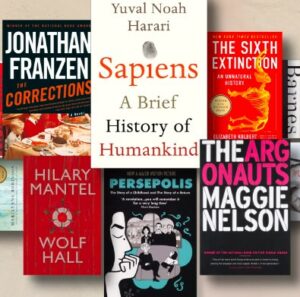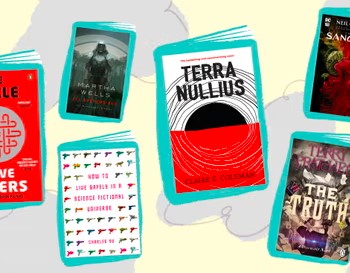Fictional literature has the unparalleled ability to transport readers to imaginative worlds, where characters, settings, and narratives come to life. In this exploration, we delve into some of the most famous fictitious reads, from beloved classics to contemporary masterpieces, each leaving an indelible mark on literary culture.

1. “Harry Potter” Series by J.K. Rowling
The “Harry Potter” series by J.K. Rowling has captured the hearts and imaginations of readers worldwide, transcending age and cultural barriers. Set in the wizarding world, the series follows the journey of Harry Potter, a young wizard who discovers his magical heritage and confronts the dark wizard Voldemort. With its richly detailed world-building, memorable characters, and themes of friendship, bravery, and sacrifice, the “Harry Potter” series continues to enchant readers of all ages.
2. “The Lord of the Rings” Trilogy by J.R.R. Tolkien
J.R.R. Tolkien’s “The Lord of the Rings” trilogy is a seminal work of fantasy literature, renowned for its epic scope, intricate mythology, and vividly realized world of Middle-earth. The trilogy follows the quest to destroy the One Ring, an artifact of great power, and the ensuing battle between good and evil. Tolkien’s masterful storytelling, richly drawn characters, and themes of heroism, friendship, and redemption have made “The Lord of the Rings” a timeless classic beloved by generations of readers.
3. “Pride and Prejudice” by Jane Austen
Jane Austen’s “Pride and Prejudice” is a timeless romantic novel that continues to captivate readers more than two centuries after its publication. Set in early 19th-century England, the novel follows the tumultuous relationship between Elizabeth Bennet and Mr. Darcy, navigating themes of love, class, and social conventions. Austen’s sharp wit, keen observation of human nature, and memorable characters. They all cement “Pride and Prejudice” as one of the most famous fictitious reads in English literature.
4. “1984” by George Orwell
George Orwell’s “1984” is a dystopian masterpiece that remains chillingly relevant in the modern age. Set in a totalitarian society ruled by the oppressive Party, the novel follows protagonist Winston Smith as he rebels against the surveillance state and thought control. Orwell’s depiction of government surveillance, propaganda, and authoritarianism serves as a cautionary tale about the dangers of unchecked power and the erosion of individual freedom.
5. “To Kill a Mockingbird” by Harper Lee
Harper Lee’s “To Kill a Mockingbird” is a powerful exploration of racial injustice, moral growth, and empathy set in the American South during the 1930s. Through the eyes of young protagonist Scout Finch, the novel confronts issues of racism and prejudice as her father, lawyer Atticus Finch, defends a black man falsely accused of raping a white woman. Lee’s poignant storytelling, memorable characters, and themes of courage and compassion have made “To Kill a Mockingbird” a timeless classic and required reading in schools around the world.
6. “The Great Gatsby” by F. Scott Fitzgerald
F. Scott Fitzgerald’s “The Great Gatsby” is a haunting portrayal of the American Dream and the decadence of the Jazz Age. Set in 1920s Long Island, the novel follows the enigmatic Jay Gatsby as he pursues the elusive Daisy Buchanan and grapples with themes of wealth, love, and the corrupting influence of materialism. Fitzgerald’s lyrical prose, vivid imagery, and exploration of the emptiness lurking beneath the surface of wealth have cemented “The Great Gatsby” as a quintessential work of American literature.
7. “The Catcher in the Rye” by J.D. Salinger
J.D. Salinger’s “The Catcher in the Rye” is a seminal coming-of-age novel that continues to resonate with readers generations after its publication. Narrated by disillusioned teenager Holden Caulfield, the novel follows his journey of self-discovery and alienation as he navigates the complexities of adolescence and adulthood. Salinger’s candid portrayal of teenage angst, rebellion, and yearning for authenticity has made “The Catcher in the Rye” a cultural touchstone and required reading in many high school curriculums.
8. “The Hobbit” by J.R.R. Tolkien
J.R.R. Tolkien’s “The Hobbit” is a beloved children’s fantasy novel. It serves as a prelude to his epic “The Lord of the Rings” trilogy. The novel follows the journey of Bilbo Baggins. This is a hobbit who is recruited by the wizard Gandalf to join a quest. A quest to reclaim the Lonely Mountain and its treasure from the dragon Smaug. It’s filled with adventure, humor, and memorable characters. “The Hobbit” has captivated readers of all ages with its timeless tale of heroism and friendship. Not forgetting the power of ordinary individuals to rise to extraordinary challenges.
9. “Alice’s Adventures in Wonderland” by Lewis Carroll
Lewis Carroll’s “Alice’s Adventures in Wonderland” is a whimsical and surreal journey into a fantastical world. It is filled with curious creatures, nonsensical language, and absurd situations. The story follows young Alice as she falls down a rabbit hole into Wonderland, where she encounters a colorful cast of characters, including the White Rabbit, the Cheshire Cat, and the Mad Hatter. Carroll’s imaginative storytelling and clever wordplay have made “Alice’s Adventures in Wonderland” a beloved classic of children’s literature.
10. “The Chronicles of Narnia” by C.S. Lewis
C.S. Lewis’s “The Chronicles of Narnia” is a beloved fantasy series that transports readers to the magical world of Narnia. Here, animals talk, mythical creatures roam, and epic adventures unfold. The series follows the adventures of various children who discover portals to Narnia. They become embroiled in its struggles between good and evil. It comes with its richly imagined world, timeless themes, and memorable characters like Aslan the lion and the Pevensie siblings. “The Chronicles of Narnia” has enchanted readers for generations.
Conclusion
The most famous fictitious reads have left an indelible mark on literary culture. Effectively captivating readers with their imaginative worlds, compelling characters, and universal themes. From the wizarding world of Harry Potter to the dystopian society of “1984.” These iconic works continue to resonate with readers of all ages. Effectively inspiring imagination, sparking conversation, and reminding us of the enduring power of storytelling. Whether revisiting beloved classics or discovering new favorites. The world of fiction offers endless opportunities for exploration, reflection, and enchantment.

